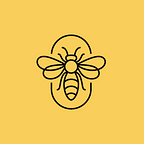Murder Hornets — Don’t Let It Become Another COVID-19
Murder hornets are trending. And like other trends, they seemed to come out of nowhere.
The world’s largest, Giant Hornet (Vespa mandarinia) is the world’s largest hornet. We first saw them on North American soil in late 2019, apparently weeks before COVID-19 arrived. They got their (very 2020) nickname, Murder Hornet, via an article in the NY Times in May 2020. By Halloween, the first nest in the U.S. was found and captured in Washington State. More than 200 reproductive females were captured.
What is happening?
Giant Hornets are the COVID-19 for bees.
Honeybees — which refers to at least seven amazing species — have adapted all kinds of ways to survive and thrive for 100 million years. Defenses against this new and dangerous threat are limited to those honeybees within Asia, where beehives can mask their perfumes to evade, or group up around an invader in a ball to raise its temperature and heat kill it. Beehives without those adaptations are vulnerable to quick decimation by Giant Hornets. North American and European honeybees are vulnerable to this newly arrived predator.
If COVID-19 has taught us anything it’s that we must take early action. If we don’t eradicate this threat right away then spread is inevitable, leaving impacts on our food system, environment, and economy. This is why we see these dramatic pictures coming out of Washington State’s entomology heroes as suited-up eradication teams doing everything they can to find and stop them.
While a sting from a Giant Hornet is painful to humans, it is only very, very rarely deadly to people. This is more an existential threat to honeybees; Murder Hornets murder honeybees, not people.
Our Food Security Is at Stake
Just as COVID-19 hurts human health, Giant Hornets can hurt our food system, impacting our nutrition and the health of our future generations. Bees pollinate over 70 fruit and vegetable crops, including the hay and alfalfa so vital to the cattle, meat, and dairy industries. So with the Giant Hornets attacking honey beehives, this is a really big threat unless we’re able to control it.
Ways to Control the Spread of the Giant Hornets
- Advanced Tracking: The nest was found “in the nick of time.” Imagine how it happened: Just one person saw and reported just one hornet, that got one tracking device tied to it — and then led the authorities to a mother-load of queens that might have started their own colonies across the region.
- Hornet Paparazzi: Giant Hornets stand out in a crowd. They’re large — some as big as your thumb. Snap that pic and share it — on social media, with the local Department of Agriculture, or with our team at The Best Bees Company. These hornets can fly for about five miles from their nest. So anytime we see one of them, we’re not exactly sure where it came from, but we know the general vicinity there likely are other nests out there.
- There’s an App for That: Especially if you are in Washington State or other part of the Pacific Northwest, we need every day citizens to be on the lookout and to report what they see. Check out the Washington State Department of Agriculture’s Invasives App. That’s how these Giant Hornets are being reported. A small step can have a huge impact!
- Protective Measures: Some of the innovations that Best Bees is working on to protect honeybee hives from these Giant Hornets in Washington State include screens and different types of materials that keep the much larger hornets — and their strong mandibles (mouthparts) — out of hives.
- Thank a Beekeeper: Beehives are barometers of environmental health, and beekeepers are stewards of biodiversity, food security, and economic vitality. Without beekeepers, we wouldn’t know these murder hornets were here — until possibly it was too late. They fired an early warning signal that gave us a fighting chance in getting ahead of this issue. Let’s heed that warning.
What’s next?
Murder Hornets can spread about 50 miles per year — and further if they catch a ride. So when we’re thinking about the future of the United States, it’s possible that in a few years, this won’t just be a Pacific Northwest issue. If we act early, we can limit the spread and get it under control.
Noah Wilson-Rich, Ph.D., is Founding Partner and Chief Scientific Officer of The Best Bees Company, the largest managed beekeeping service in the U.S.
